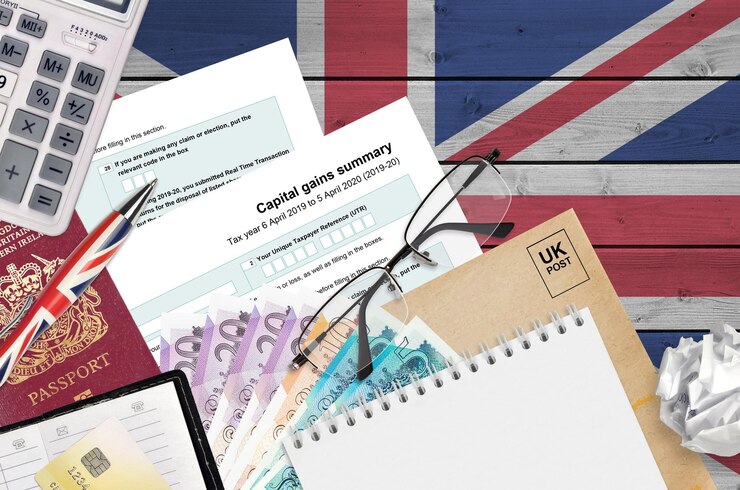If you consider studying in the UK, you’re not alone!
The UK is a preferred destination for students globally due to its outstanding universities, mixed culture, and excellent career opportunities. Thousands of students apply for admission annually, particularly during the September intake when most courses commence. Getting into a UK university can be challenging. It varies based on the university, the course you pick, and the strength of your application. In this blog, we will look at the UK university acceptance rate for September, what influences admissions, and how you can boost your chances of getting in.
What is the September Intake?
The September intake is the UK’s most popular and essential admission cycle. Most undergraduate and postgraduate courses begin during this period, offering the widest selection of programs, the most available seats, and more scholarship opportunities.

Application Timeline for September Intake:
The application process for the September intake Admission UK generally begins almost a year in advance, with the following general timeline:
| Stage | Timeframe |
| Applications Open | September – October (previous year) |
| University Deadlines | January – June |
| Offer Letters Issued | March – July |
| Visa Applications | June – August |
| Course Commencement | September |
Most universities set their early deadlines in January, especially for highly competitive courses, while others may have rolling admissions until June or July. Applying early increases the chances of securing a spot, especially for high-demand courses.
Acceptance Rate of UK Universities for September Intake
Acceptance rates vary by university, program, and applicant competition. Here’s a study of the acceptance rates for some of the top UK universities:
| University Name | Acceptance Rate (%) | Type |
| University of Oxford | 17% | Highly Competitive |
| University of Cambridge | 21% | Highly Competitive |
| Imperial College London | 14% | Highly Competitive |
| London School of Economics (LSE) | 16% | Highly Competitive |
| University College London (UCL) | 30% | Competitive |
| University of Edinburgh | 40% | Moderately Competitive |
| University of Manchester | 56% | Moderately Competitive |
| University of Birmingham | 74% | Less Competitive |
| University of Nottingham | 78% | Less Competitive |
| University of Leeds | 80% | Less Competitive |
Important insights
- Highly Competitive Universities: Oxford, Cambridge, Imperial, and LSE have low acceptance rates due to their high academic standards and rigorous selection process.
- Moderately Competitive Universities: Institutions like Manchester and Edinburgh have a balanced acceptance rate, making them accessible to strong applications.
- Less Competitive Universities: Universities like Nottingham, Birmingham, and Leeds have higher acceptance rates, making them more accessible to international students.
Factors Affecting the UK University Acceptance Rate in the September Intake
Several factors influence a UK university acceptance rate during the September intake:

- University Ranking & Reputation
Due to high demand and rigorous selection criteria, top-ranked universities have lower acceptance rates. Institutions like Oxford, Cambridge, and Imperial receive thousands of applications for limited spots.
- Course Popularity
Programs like Medicine, Law, Engineering, and Business often have lower acceptance rates due to high competition. Less popular courses may have a higher acceptance rate.
Read Also: How to Study in UK without IELTS Requirements?
- Application Strength
Your academic profile, personal statement, and references significantly impact your chances. Competitive universities prioritize candidates with high academic scores, research experience, and strong recommendation letters.
- Number of Applications Received
Popular universities receive more applications, leading to a lower acceptance rate. For example, UCL and LSE receive thousands of international applications yearly, making admissions highly competitive.
- Seats Available
The number of available seats for a course determines how selective an institution is. Highly selective programs may only accept 5-10% of applicants.
- International vs. Domestic Applicants
International students often face higher competition as universities have limited spots for non-UK applicants. Some universities have specific quotas for international students, affecting acceptance rates.

Tips to Improve Your Chances for September intake Admission UK
If you’re applying for the September intake, follow these strategies to enhance your admission chances:
- Apply Early
- Most universities have application deadlines between January and June.
- Early applications stand a higher chance of being considered before courses fill up.
- Meet or Exceed Academic Requirements
- Maintain a high GPA or equivalent scores.
- Aim for A-levels or IB scores that meet the entry requirements for undergraduate courses.
- For postgraduate courses, provide your bachelor’s degree GPA that meets the expected cut-off.
- Prepare a Strong Personal Statement
- Clearly state why you want to study the course.
- Highlight relevant experiences, skills, and career goals.
- Show enthusiasm and alignment with the university’s values.
Read Also: UK Student Visa Interview Questions - Secure Strong Letters of Recommendation
- Obtain references from teachers or employers who know your academic and professional capabilities.
- Score Well in English Proficiency Tests
Most UK universities require:
- IELTS: Minimum 6.0 – 7.5
- TOEFL: Minimum 80 – 100
- PTE Academic: Minimum 58 – 76
- Apply to Multiple Universities
- To improve your chances, balance your applications by applying to a mix of highly competitive, moderately competitive, and less competitive universities.
- Apply for Scholarships
- Many UK universities offer scholarships based on academic merit, extracurricular achievements, and financial need.
- Apply early to maximize your funding opportunities.
Talk to an Expert for FREE Counselling
Conclusion
The September intake is the best time to apply to UK universities due to wider course availability, better funding options, and increased networking opportunities. However, acceptance rates vary based on university ranking, course popularity, and applicant competition.
If you aim for a highly competitive university, ensure you prepare a strong application, meet academic requirements, and apply early. Following these strategies can increase your chances of securing admission to your desired UK university during the September intake.







